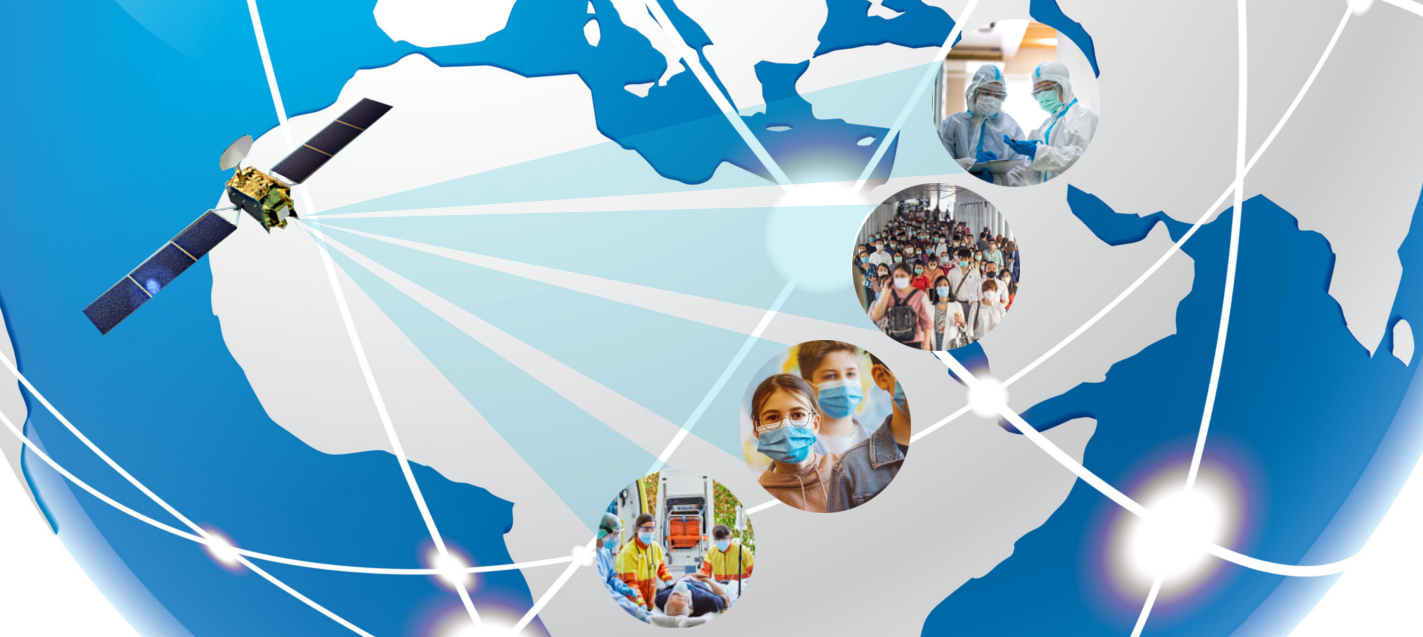21 October 2020
The testing of HERMES, the project of Telespazio - a joint venture between Leonardo (67%) and Thales (33%) - and e-GEOS - an ASI (20%) and Telespazio (80%) company - to help hospitals and first aid units to better respond to health emergencies, has started in the last few weeks.
HERMES also meets the concept of the Be Tomorrow 2030 strategic plan of Leonardo, whose foundations include the co-operation with institutions and organisations to support and protect people and communities around the world by contributing to their sustainable growth thanks to its leadership in new generation technologies.
The partners involved in the project, originated in response to a call from the European Space Agency (ESA) and the Ministry for Technological Innovation and digitization (MID), include the Italian Red Cross, the Gabriele D’Annunzio University of Chieti-Pescara and the Campus Biomedico of Rome. The Italian Armed Forces also took part in the testing phase.

HERMES (Healthcare Emergency support system for the distributed Response and Monitoring of Epidemics in the Society) is an ecosystem of services that supports screening, prevention, monitoring and health logistics in response to serious emergencies such as COVID 19. HERMES can, for instance, provide geo-referenced information to monitor the statistical distribution of coronavirus case studies in pre-triage and screening centres, while fully respecting privacy.
HERMES can thus provide institutions, such as Italian Civil Protection or the Istituto Superiore di Sanità (ISS), with a tool to determine the trend of pandemic development over time. HERMES also provides support for the logistical coordination of health care to enable the best distribution of resources and assets in the territory and to allow effective action against the coronavirus.
The two pillars of the HERMES ecosystem are the hybrid satellite-ground (i.e. using satellite, mobile networks, etc.) high-speed communication infrastructure, provided by Telespazio, and the Data Centre developed by E-GEOS. The latter, in particular, is based on CLEOS, the new geoinformation Marketplace solution recently launched on the market, which in addition to collecting all the diagnostic Big Data allows, thanks to Artificial Intelligence, performing scientific analyses capable of correlating the test results of different screening methods and thus excluding possible suspected cases.
Around the communication network and Data Centre, the partners involved in the project have developed advanced solutions and specific healthcare applications for screening, prevention, monitoring and healthcare logistics activities. Again thanks to artificial intelligence, for example, the VoiceWise application allows to perform a first evaluation screening simply by analysing the patient's voice, while the application created by the Campus Biomedico of Rome analyses the CT and pulmonary X-rays carried out in telemedicine and thus identifies possible positive cases.
In addition to specific applications, HERMES is designed for emergency management through infrastructure such as field hospitals, medical kiosks and next-generation medical VANS, equipped with innovative IoT tools and sensors, telemedicine kits, and new digital tools.
“HERMES is an ecosystem that makes hospitals and health-care facilities more resilient and prepares them to better deal with the evolution of pandemics such as Coronavirus. HERMES can also be particularly useful in situations where the fight against epidemic emergencies at international level is aggravated by further emergency situations, such as earthquakes, floods, or other natural disasters. In these circumstances, massive gatherings of people can occur, and HERMES applications enable relief workers to quickly and safely screen the population”.
Marco Brancati, Chief Technology and Innovation Officer of Telespazio.
Leonardo, together with Telespazio and e-GEOS, establishes itself as a key partner in the provision of innovative and digital services even in the health care sector. During the COVID-19 emergency, e-GEOS, through the ESA/European Commission Copernicus EMS Rapid Mapping service, has already provided the involved authorities with detailed maps of cities and towns for the monitoring of the public places most subject to risks. Moreover, thanks to its expertise and strategic concept, last summer the Group has also won an important international tender of the United Nations Industrial Development Organisation (UNIDO) with the proposal for the development of a platform to deal with the new challenges of the health crisis. HERMES is another proof of the commitment of Leonardo towards people’s health and protection

